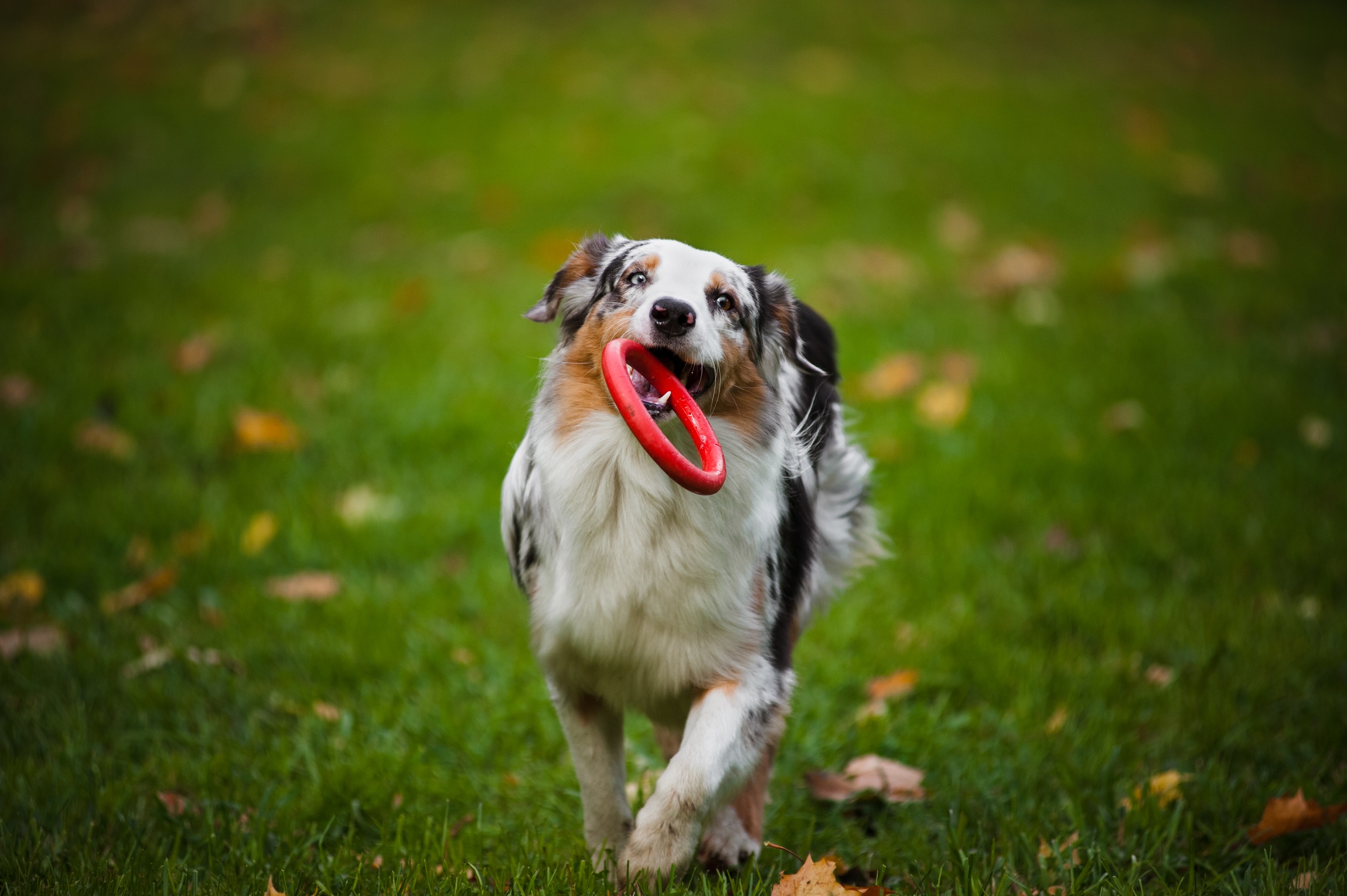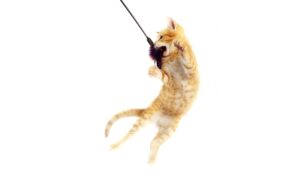Consumers Seek Pet Toys That Encourage Connection, Stimulate Senses
Glenn Polyn //February 1, 2021//
Last year saw the COVID-19 virus bring much of the country to a screeching halt, with businesses encouraging employees to work from home. If we can view the pandemic through rose-colored glasses, we would say the good news is that pet owners were able to spend a far greater amount of time interacting with their animal companions.
This increased time spent bonding with their furry companions has resulted in consumers making more toy purchases to shower their pets with affection while also keeping them active and entertained. After all, a busy pet is a happy pet.
Look up and down any toy section in a pet store, and you’re bound the see those popular mainstays. These include balls, plush toys, squeaky toys, interactive toys and others, available in the economy, mid-range and premium price levels. Yet with the pandemic hitting some consumers in the pocket book, a factor that has the potential to impede the growth of the pet toys market growth is product price. This is because premium, quality toys are manufactured from safe, non-toxic materials that involve a high production cost. To offset this, manufacturers have to impose a high retail price, rendering them unaffordable to moderate income consumers.
However, according to the American Pet Products Association (APPA), total pet industry expenditure across the United States was estimated to reach $99 billion by the end of 2020, up from $95.7 billion the previous year. A significant chunk of this expenditure has been allocated to pet toys.
While most other industries have seen unpredictable upheavals over the past year, the pet market has remained reliable. Many market analysts, including the U.S. Pet Market Outlook 2020-2021, have noted that the pet industry “stands out as famously recession-resistant.”
Thus, despite the dark cloud of the pandemic looming over most areas of the business world, the pet industry continues to witness a prolific expansion, attributed to rising ownership of dogs and cats across individual households. According to 24PetWatch, pet adoptions have increased by 36 percent during the pandemic. With last year’s boom of pet adoptions – as well as those pets finding a temporary home via fostering – consumer interest in pet toys has followed suit.
Very few people would question the idea that the toy sector is a competitive landscape. The list of reliable toy makers is a lengthy one, with prominent brands including Duckyworld, Kong Company, Mammoth, True Dogs, Nylabone, Petmate, West Paw, Vee Enterprises, ZippyPaws and Coastal Pet Products.
One aspect that might have benefited from the pandemic is the recent spike in e-commerce sales. With lockdown restrictions not permitting owners to visit conventional supermarkets or pet stores, the amount of time spent on online shopping has surged multifold. CNN reported last last year that online sales have increased by 45 percent since the pandemic began in March, and trends are showing past online sales during the holidays also will see dramatic increases.
Adam Baker, founder and president of True Dogs, maker of the SodaPup line of dog toys, sees this as beneficial for savvy startups and independent retailers. “Historically, the pet toy category was stagnant with a handful of brands dominating the space with product offerings that evolved very slowly,” Baker explained. “Large retailers set the pace for how toy assortments evolved. As consumers have migrated more and more toward e-commerce purchases it has created opportunities for smaller brands to break through with fun and innovative offerings that have not yet been adopted by larger retailers. As a result, consumers are being offered an unprecedented level of new product options and they are voting with their wallets for novelty and variety.
“In a category that has traditionally been driven by basics, there is now a faster-moving ‘fashion’ or ‘novelty’ element being embraced by dog owners,” he continued. “Paradoxically, e-commerce is largely responsible for this new proliferation of products and, while e-commerce is a threat to brick and mortar retailers, the wealth of new products it is spawning benefits smaller retailers because they have more ways than ever to differentiate their assortments from big box retailers.”
Pet humanization, or anthropomorphism, has become a common phrase within the pet care industry as more owners want to provide their pets with human-like products or experiences. This includes celebrating their birthdays or “gotcha” anniversaries, grooming them for family events or other special occasions and purchasing premium toys for them during the holidays.
Due to the surging humanization trend, not only are the sales of pet toys bound to increase, it also opens the door for many manufacturers to dip into their creativity to produce something that is unique yet functional.
Pet humanization is a big part of the toys manufactured by DuckyWorld, the maker of Yeowww! Catnip, U.S.-made cat toys stuffed with organically grown catnip.
“For cats who love to grab and bunny kick their toys, the Yeowww! Catnip Chicata Banana is by far a favorite with cats around the world,” said Kris Kaiser, digital marketing specialist for DuckyWorld Products. “It has a cult following of sorts in many cat groups, and you can see the devotion all over social media. The Stinkies Sardines toy is another favorite, and a great way for cat owners to introduce Yeowww! Catnip toys for the first time.”
 Kaiser believes this year pet owners will remain eager to spoil their pets, especially with the difficulties caused by the COVID-19 pandemic.
Kaiser believes this year pet owners will remain eager to spoil their pets, especially with the difficulties caused by the COVID-19 pandemic.
“With so many pet owners home more now than ever, there’s a lot of entertainment value and enjoyment out of seeing their beloved pets really enjoying a toy. Plus, it feels nice to treat your pet with a toy they enthusiastically love.”
Change is good, especially in the pet industry. And pet product trends change frequently, which Baker of True Dogs views as an evolution of sorts.
“Consumer preferences regarding pet toys have evolved in recent years,” he said, adding that pet owners are moving “toward values-based purchasing decisions. Now, more than ever, consumers support brands that align with their own values. Largely, this comes down to supporting companies that produce in the U.S.A., are committed to product safety, and companies that give back to the communities where they do business.”
Paul Daniels, CEO of 4BF (For Best Friends), agrees that more consumers than ever want to buy local and purchase American-made products. The New Mexico-
based company’s products are made using no plastic additives and range in variety of size and design for dogs and cats. Additionally, five percent of the profit from every sale is donated to animal shelters and pet-related charitable organizations.
“People love their pets, and so do we,” Daniels said. “We know how hard the pandemic has been on everyone. Looking at our business, the time was right to expand and make it easier for people to order great pet toys easily and from the comfort of their homes.”
However, pet owners know that buying a new toy is risky business: If it’s too complicated, the companion animal could lose interest in the toy and if it’s not durable enough, the pet will rip and shred the product to pieces in a matter of minutes.
Toys offer physical as well as mental stimulation and enrichment, improving a pet’s overall concentration and cognitive abilities. Still, engaging toys are essential for challenging a pet. From interactive puzzles that test a pet’s smarts to durable ropes that promote healthy teeth, toys are highly useful in encouraging the positive development of an animal’s overall health and offsetting problematic behavior due to excessive energy storage.
Both dog and cat owners want toys that will help their pets exercise their natural instincts while also promoting a healthy bond between pet and human. Vee Enterprises is a longtime cat toy manufacturer that was founded by Lorie Viner in 1988.
“In 1988, Max, our family cat, became an indoor cat with endless amounts of energy. He would run wild throughout the house causing all kinds of ruckus. In order to get his attention in an attempt to play with him, I’d use our tree branches. Needless to say, the branches wouldn’t last very long during these play sessions,” said Viner in Pet Age Back Story profile in February 2018. “That is when magic struck, and after gathering some loose materials in the house, I developed what is known today as the original PURRfect Cat Toy.”
The product line remains extremely innovative, include its PURRfect Wild Hemp line full of colorful feathers and hemp cord designed to capture any kitten’s attention and lure them into hours of chasing, hunting and attacking. And with cats having an affinity for the smell and texture of leather, Vee designed its PURRfect Leather Bouncer to satisfy these instincts. The best-selling, award-winning product features a 16-inch wand with an all-natural vegetable-tanned leather cord and a faux-fur end with leather tassels that cats can’t resist.
The “go green” movement, especially in the pet care community, has not slowed down. If anything, the philosophy has expanded to include a bigger focus on eco-friendly and sustainability. Consumers are becoming aware of the threat posed by conventional plastic and rubber toys to the environment and are therefore making conscious efforts to opt for more sustainable alternatives.
In recent years, adverse environmental impacts concerning plastic toys have caused pet owners to switch to more sustainable and safe options, prompting vendors to introduce toys made from nylon, rubber and other biodegradable material. These concerns regarding environmental sustainability have fueled the demand for eco-friendly and biodegradable toys. Capitalizing on this trend, manufacturers have been launching an endless array of earth-friendly toys, which incorporate materials such as recycled polyester and cotton to make their products. Examples of such toys are the West Paw’s extremely pliable Zogoflex material and P.L.A.Y.’s ZoomieRex, which is a line of certified nontoxic toys made from an eco-friendly thermoplastic elastomer.
As many pet owners continue to work from home, they are presented with an abundance of time to interact and play with their pets. As a result, the demand for pet toys is surging substantially, keeping the market growing throughout the pandemic’s duration.
Retailers would be wise to take advantage of this period to place their selection of toys front and center in their stores, while also promoting a variety of their toy inventory on their social media platforms. The winter holiday season might be over, but consumers still crave toys for their beloved pets. And even after the pandemic slowly settles down, don’t be surprised to see pet toys continue to have a steady demand. After all, toys are a big part of the human-animal bond, and that is never going away.



















